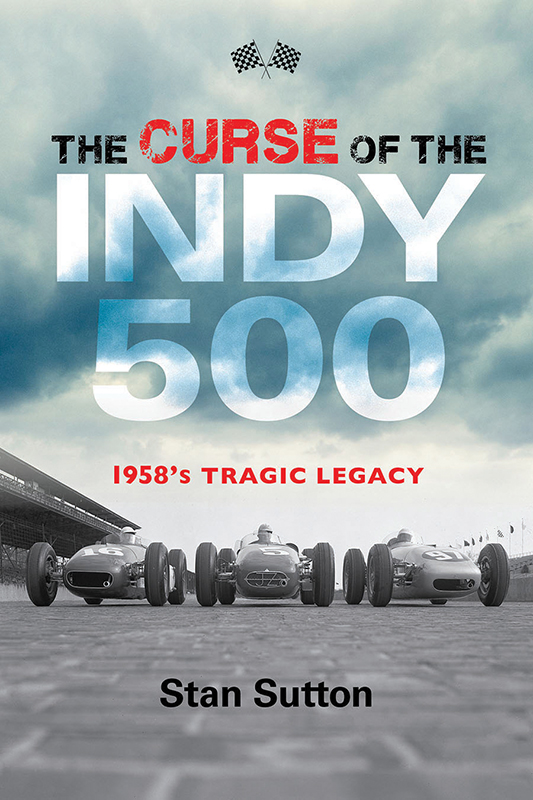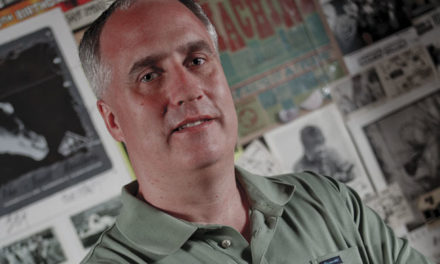
BY JULIE GRAY
Sportswriter Stan Sutton’s The Curse of the Indy 500: 1958’s Tragic Legacy centers on a massive crash that killed one driver and seemingly cast a jinx on many others. Chapter by chapter, Sutton recounts the accidents that, over the years, took the lives of a dozen other drivers in that year’s race.
The curse appears to be of Sutton’s own invention. Race fans are undoubtedly more familiar with two other notorious Indy 500 curses. Pat O’Connor, the driver killed in the 1958 race, had been on the cover of Sports Illustrated the week before. The unfortunate connection became known as the Sports Illustrated cover jinx, as dozens of athletes featured on the magazine’s cover have suffered injuries, losses, slumps, and even death not long after appearing there.
Then there is the Andretti curse, which purportedly explains why, in three generations, only Mario has ever won the Indy 500, in 1969. The curse finally lifted in 2005, when 26-year-old Dan Wheldon, a driver on the Andretti team, won the venerated race.
As he reviews the sport’s history, Sutton establishes that auto racing in general is cursed, beset by inevitable collisions and accidents. From the time the Indianapolis Motor Speedway opened in 1909 and the year 2016, not only were 42 drivers killed, but 31 other people (including mechanics, track personnel, and spectators) also lost their lives.
There have been efforts to reduce those numbers. Sutton describes the addition of safety measures such as seat belts, better helmets and fuel tanks, fire-retardant uniforms, and barrier walls covered in steel and foam to absorb the impact of crashing cars.
Given the continuing grim statistics, what accounts for the sport’s popularity? Many believe it springs from the sound of the roaring engines. Even though turbine cars competed very well in 1967 and 1968, Sutton explains that because they were so quiet, they were legislated out of the sport.
Perhaps the best explanation for why some people love to race and others love to watch was given by sports announcer Sid Collins when he eulogized driver Eddie Sachs, who had just died in the 1964 Indy 500: “We are all speeding toward death at the rate of 60 minutes every hour; the only difference is, we don’t know how to speed faster and Eddie Sachs did. So, since death has a thousand or more doors, Eddie Sachs exits this earth in a race car. Knowing Eddie, I assume that’s the way he would have wanted it.”











